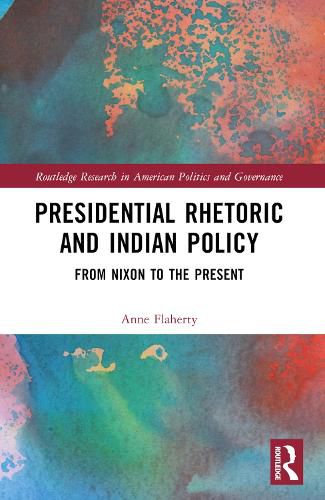Readings Newsletter
Become a Readings Member to make your shopping experience even easier.
Sign in or sign up for free!
You’re not far away from qualifying for FREE standard shipping within Australia
You’ve qualified for FREE standard shipping within Australia
The cart is loading…






Presidential Rhetoric and Indian Policy explores and analyses the dynamics of presidential rhetoric on Native peoples and issues from Nixon to the present.
Covering Presidents Washington through Johnson in an overview before turning to focus on the modern era of self-determination, Anne Flaherty offers a systematic analysis of 700 presidential statements that mention Native issues from 1969 through 2020 to evaluate whether presidents in the modern era have used their rhetorical platforms to bring attention to Native issues and to support this coherent strategy of self-determination. Flaherty provides evidence that rhetorical themes vary by administration and seem to either rely on more symbolic, historical language or to connect more clearly to the dominant platforms and messages of the president in question. The book then moves to incorporate an analysis of key outcomes compared across the administrations. The data and analysis show that federal spending, legislative outcomes, and Supreme Court decisions have not consistently supported self-determination policy over the past 50 years.
This book is a must read for scholars and students interested in indigenous politics, Native American Indian Politics, US presidency and rhetoric.
$9.00 standard shipping within Australia
FREE standard shipping within Australia for orders over $100.00
Express & International shipping calculated at checkout
Presidential Rhetoric and Indian Policy explores and analyses the dynamics of presidential rhetoric on Native peoples and issues from Nixon to the present.
Covering Presidents Washington through Johnson in an overview before turning to focus on the modern era of self-determination, Anne Flaherty offers a systematic analysis of 700 presidential statements that mention Native issues from 1969 through 2020 to evaluate whether presidents in the modern era have used their rhetorical platforms to bring attention to Native issues and to support this coherent strategy of self-determination. Flaherty provides evidence that rhetorical themes vary by administration and seem to either rely on more symbolic, historical language or to connect more clearly to the dominant platforms and messages of the president in question. The book then moves to incorporate an analysis of key outcomes compared across the administrations. The data and analysis show that federal spending, legislative outcomes, and Supreme Court decisions have not consistently supported self-determination policy over the past 50 years.
This book is a must read for scholars and students interested in indigenous politics, Native American Indian Politics, US presidency and rhetoric.